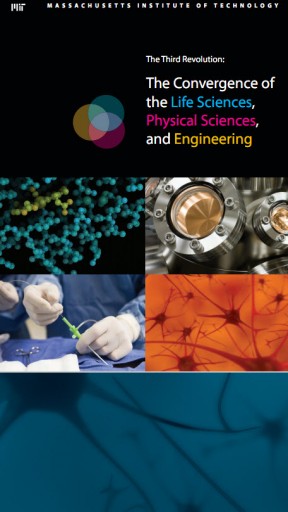1.31.2011
Conjunction junction, now we know your function
Shining a light on skin cancer
1.27.2011
Being fat could save your life...that is after it causes your heart attack
Bomb-sniffing plants, that's right I said plants!
Picture this at an airport, perhaps in as soon as four years: A terrorist rolls through the sliding doors of a terminal with a bomb packed into his luggage (or his underwear). All of a sudden, the leafy, verdant gardenscape ringing the gates goes white as a sheet. That’s the proteins inside the plants telling authorities that they’ve picked up the chemical trace of the guy’s arsenal.
It only took a small engineering nudge to deputize a plant’s natural, evolutionary self-defense mechanisms for threat detection. “Plants can’t run and hide,” says June Medford, the biologist who’s spent the last seven years figuring out how to deputize plants for counterterrorism. “If a bug comes by, it has to respond to it. And it already has the infrastructure to respond.”
The world can be powered by alternative energy, using today’s technology, in 20-40 years (If there's still a world)
1.24.2011
Another reason to enjoy that morning cup of joe...no Type 2 diabetes
1.21.2011
Is 100% renewable energy realistic? Apparently so...
Natural Defense: Blood vessels battling cancer cells
One word of advice...PLASTICS
FLEXIBLE DISPLAYS:
-Advantages: Flexible plastic displays can be thinner, lighter and more durable than glass, which can lower manufacturing costs, increase product life and make new designs possible.
-Applications: First will likely be smart phones, tablets and notebook computers. It could eventually be used in clothing, wall displays and other products that can be curved or rolled.
-Challenges: Requires new manufacturing processes and transistor materials. Hewlett-Packard is working on a method for imprinting and etching spools of plastic film; others are working with sheets of plastic temporarily bonded to glass.
What's the 'carbon footprint' of a pair of jeans?
1.20.2011
Duct tapes replacement as a fix-all...UV light
Getting fat by going to the gym
1.14.2011
1.12.2011
Don't swat that pesky hornet... study it!
 In the course of their research, the Tel Aviv University team also found that the yellow and brown stripes on the hornet abdomen enable a photo-voltaic effect: the brown and yellow stripes on the hornet abdomen can absorb solar radiation, and the yellow pigment transforms that into electric power.
In the course of their research, the Tel Aviv University team also found that the yellow and brown stripes on the hornet abdomen enable a photo-voltaic effect: the brown and yellow stripes on the hornet abdomen can absorb solar radiation, and the yellow pigment transforms that into electric power.In the Sahara desert, sand + sun = solar power

Image credit: Diginfo TV
Sahara desert project aims to power half the world by 2050
Shh... Listen...Can you hear that? It's the sound of pain-free disease diagnosis
1.11.2011
Look deep into my eyes...
 Lenses that monitor eye health are on the way, and in-eye 3D image displays are being developed too – welcome to the world of augmented vision
Lenses that monitor eye health are on the way, and in-eye 3D image displays are being developed too – welcome to the world of augmented vision1.09.2011
‘Convergence’ better than 'Divergence' in scientific research

1.08.2011
Killing tumors with micelles (That's 'my-cells' not 'your-cells')
A new nanodelivery system is able to sneak cancer treatments past the defenses of drug-resistant tumor cells—offering hope to many cancer patients who benefit little from existing drug treatments.
Researchers at the University of Tokyo designed small soapy clusters of molecules, called micelles, to carry drugs into tumor cells and release their cargo inside. The molecules harness the cell's internal transport system to get close to their target—the cell's DNA.
Genetic modification of microbes...there's an app for that
Genetically modified microbes could perform many useful jobs, from making biofuels and drugs, to cleaning up toxic waste. But designing the complex biochemical pathways inside such microbes is a time-consuming process of trial and error.
Christopher Voigt, an associate professor at the University of California, San Francisco, hopes to change that with software that automates the creation of "genetic circuits" in microbes. These circuits are the pathways of genes, proteins, and other biomolecules that the cells use to perform a particular task, such as breaking down sugar and turning it into fuel. Voigt and colleagues have so far made basic circuit components in E. coli. They are working with the large California biotechnology company Life Technologies to develop software that would let bioengineers design complete genetic circuits more easily.
Designing a microbe for a particular task would then be much like writing a new computer program, says Voigt. Just as programmers do not have to think about how electrons move through the gates in an integrated circuit, he says, biological engineers may eventually be able to design circuits for genes, proteins, and other biomolecules at a level of abstraction. "If we apply computational processes to things that bacteria can already do, we can get complete control over making spider silk, or drugs, or other chemicals," he says.
1.06.2011
Screw plastic, I want my joints au natural
Biological joints could replace artificial joints | KurzweilAI